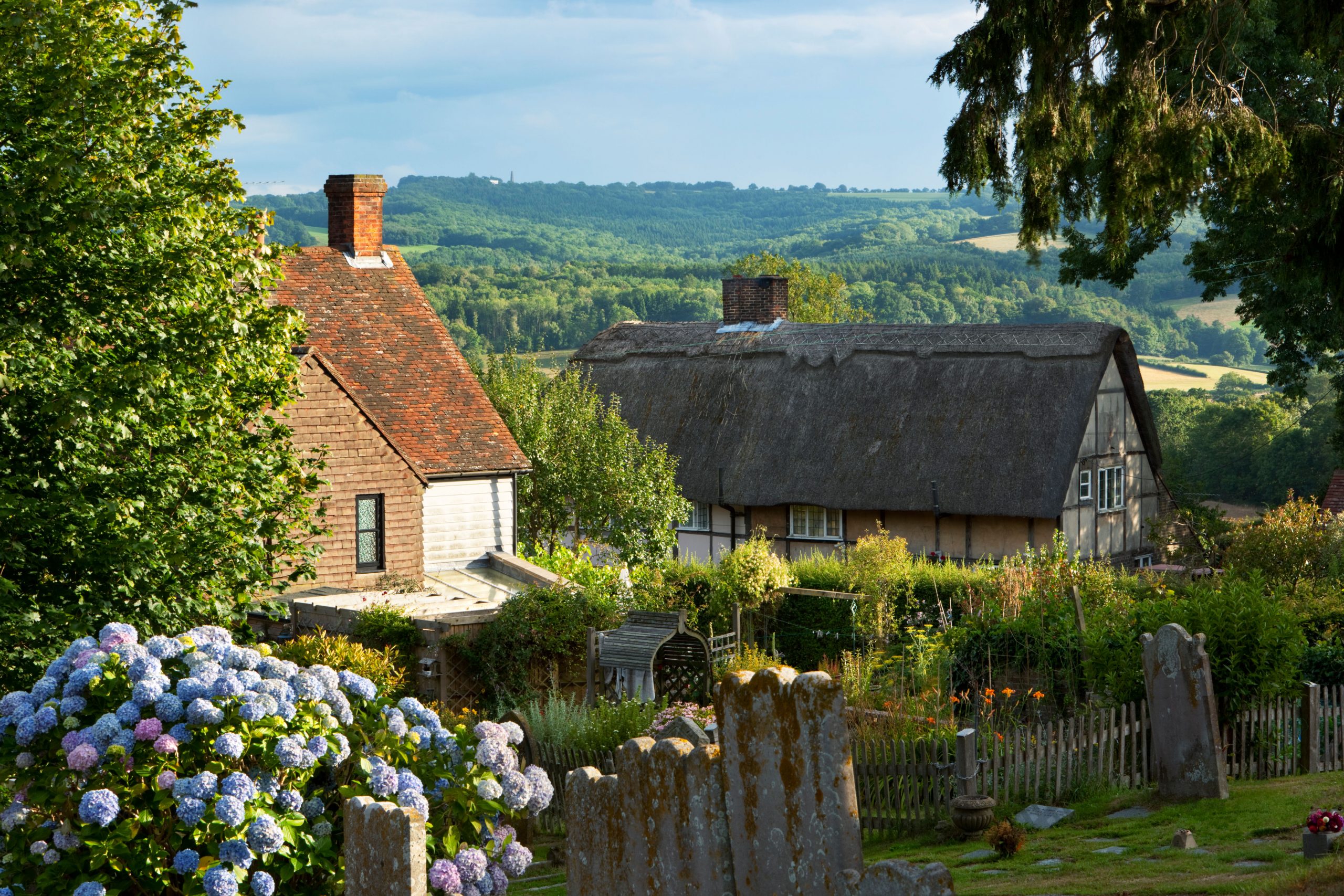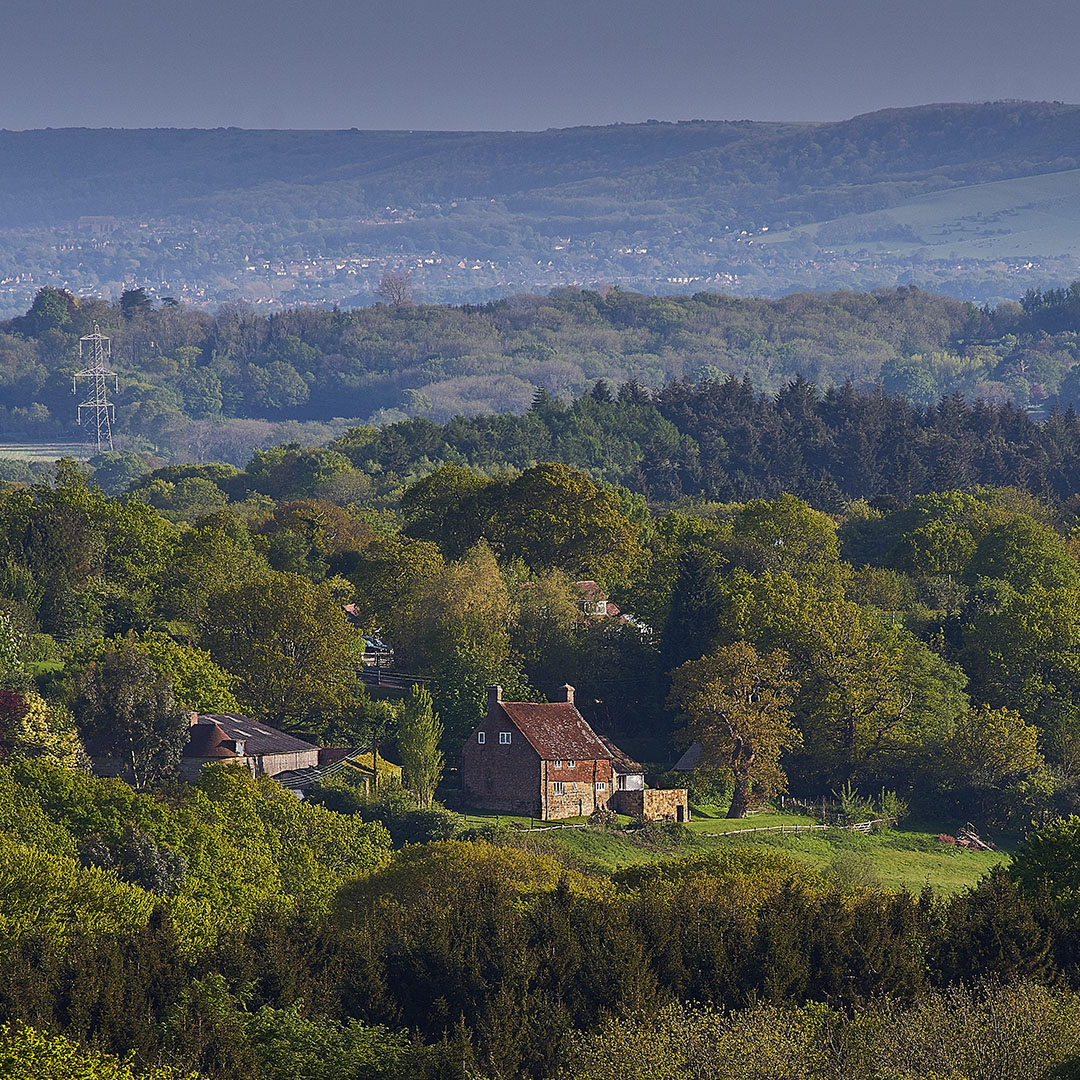The High Weald AONB: Rolling hills, endless forest and steam railways puffing through a very English landscape
The High Weald AONB's rolling landscape is the archetypal image many of us have of rural England. Octavia Pollock takes a look.


There are few who have not explored the High Weald Area Of Outstanding Natural Beauty, as least in their imagination, for this is the home of Winnie the Pooh. His Hundred Acre Wood in Ashdown Forest, high on the Weald Forest Ridge, is the heart of this medieval stretch of Kent, Surrey and Sussex, where kings once hunted and the tree cover (at 28% the highest in the country) would satisfy the most ardent proponents of planting.
Until the 16th century, when the coalfields of the North took over, Wealden oaks drove the iron industry and hammer ponds that powered the water wheels remain.

Sunken lanes or droves radiate across the region, bluebell-filled tree tunnels dappled with sunlight that were formed by pannage, when pigs were driven to the woods to feast on acorns. White-topped oast houses evoke the scent of drying hops.
Above rise sandstone outcrops, such as climbers’ favourite Harrison’s Rocks, and the 770-acre Bewl Water marks where houses were drowned to create the reservoir in the 1970s; when full, it can hold 31 million litres of water. Nature reserves and SSSIs abound, from sandy heathland to beech woods.
The long prosperity of the Weald means it is rich in historic houses and gardens, from Penshurst Place in the north, home of Elizabeth I’s favourite Sir Philip Sidney, to Arts-and-Crafts Standen in the west and 14th-century moated Bodiam Castle in the south. Anne Boleyn lived at Hever Castle, Sir Arthur Conan Doyle took inspiration from Groombridge Place, Denys Eyer Bower collected from Chiddingstone Castle, Ellen Terry rehearsed at Smallhythe and Rudyard Kipling wrote at Bateman’s.

At Sissinghurst Castle, Vita Sackville-West and Harold Nicolson created the breathtaking garden still enjoyed by their grandson, Adam. Gardeners, indeed, are spoilt for choice: Kew manages Wakehurst Place, Pashley Manor Gardens embody rose-strewn Englishness and the Messel family’s talent is evident at romantic Nymans.
Criss-crossing this land are no fewer than three heritage railways that still puff through the Weald: the north-south Bluebell Railway, from East Grinstead to Sheffield Park; the Spa Valley Railway, from Tunbridge Wells to Eridge; and the Kent & East Sussex Railway, from Tenterden to Bodiam.
Sign up for the Country Life Newsletter
Exquisite houses, the beauty of Nature, and how to get the most from your life, straight to your inbox.


The Llyn Peninsula AONB: Spectacular views, tragic tales and the rarest apple in the world
The Llyn Peninsla AONB entrances Kate Green.

The Kent Downs AONB: One of Mother Nature's works of art, from the famous White Cliffs to the wildlife of the Garden of England
Victoria Marston takes a look at the magnificently beautiful Kent Downs AONB.

The Suffolk Coast AONB: A landscape shaped by Man and Nature, in peace and in power
James Fisher takes a look at the Suffolk Coast and Heaths AONB.
Octavia, Country Life's Chief Sub Editor, began her career aged six when she corrected the grammar on a fish-and-chip sign at a country fair. With a degree in History of Art and English from St Andrews University, she ventured to London with trepidation, but swiftly found her spiritual home at Country Life. She ran away to San Francisco in California in 2013, but returned in 2018 and has settled in West Sussex with her miniature poodle Tiffin. Octavia also writes for The Field and Horse & Hound and is never happier than on a horse behind hounds.
-
 Why British designers dream up the most desirable hotels
Why British designers dream up the most desirable hotelsWhen it comes to hotel design, the Brits do it best, says Giles Kime.
By Giles Kime Published
-
 The five minute guide to 'The Great Gatsby', a century on from its publication
The five minute guide to 'The Great Gatsby', a century on from its publication'The Great Gatsby' sold poorly the year it was published, but, in the following century, it went on to become a cornerstone of world literature.
By Carla Passino Published